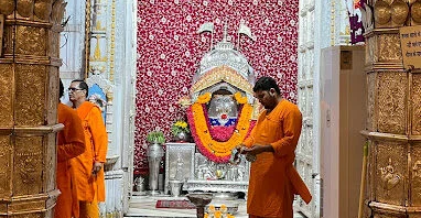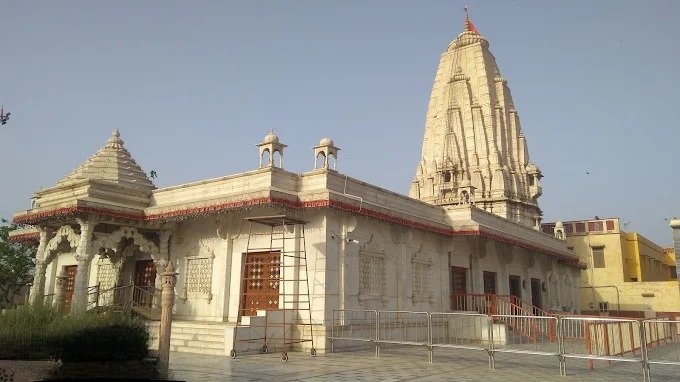Shree Rani Satiji Mandir, Jhunjhunu,Rajasthan
This temple of Queen Sati is 400 years old
Rani Sati Temple (Rani Sati Dadi Mandir) is a temple located in Jhunjhunu, Jhunjhunu district of Rajasthan state, India. It is the largest temple in India, dedicated to Queen Sati, a Rajasthani woman who lived between the 13th and 17th centuries and committed sati (self-immolation) upon the death of her husband. Various temples in Rajasthan and elsewhere are dedicated to his worship and to commemorate his work. Rani Sati is also called Narayani Devi and is called Dadiji (grandmother).
Story
The story of Rani Sati Dadi Maa starts from the time of Mahabharata which is related to Abhimanyu and his wife Uttara. When Abhimanyu died while breaking the Chakravyuha created by Korvo in the fierce battle of Mahabharata, Uttara got grief-stricken after seeing Abhimanyu losing his life due to betrayal by Kauravas and decided to commit sati on Abhimanyu. But Uttara was pregnant and was about to give birth to a child. Seeing this, Shri Krishna told Uttara to forget the idea of ending her life, as it was against the religion of a woman who was just about to give birth to a child. Hearing these words of Shri Krishna, Uttara was very impressed and she changed her decision of committing Sati but instead she expressed a wish according to which she wanted to become the wife of Abhimanyu in the next life and commit Sati.
As given by Lord Krishna, in her next birth she was born as the daughter of Gursamal Birmewal in Dokwa village of Rajasthan and was named Narayani. Abhimanyu was born in Hisar as the son of Jaliram Jalan and was named Tandan Jalan. Tandan and Narayani got married and were living a peaceful life. He had a beautiful horse on which the son of the king of Hisar was looking at for a long time. Tandan refused to hand over his precious horse to the king’s son.
The king’s son then decides to acquire the horse by force and thus challenges Tandan to a duel. Tandan fights bravely and kills the king’s son. The angry king thus kills Tandan in battle in front of Narayani. Narayani, a symbol of female bravery and strength, fights and kills the king. She then ordered Ranaji (the caretaker of the horse) to make immediate arrangements for her husband’s cremation as well as setting it on fire.
Ranaji, being instrumental in fulfilling her wish of being sati along with her husband, is blessed by Narayani that she will be taken and worshiped with her name and from then on she is known as Rani Sati. .
Temple
The temple is notable for not containing any paintings or sculptures of any female or male deities. Instead the Trishul, depicting power and force, is worshiped religiously by the followers. There is a picture of Rani Sati Dadi ji in the main temple. The temple is constructed of white marble and has colorful wall paintings.
The complex of Rani Sati temple also houses Lord Hanuman Temple, Sita Temple, Thakur Ji Temple, Lord Ganesha Temple and Shiv Temple. There is a regular ‘Prasad’ distribution after each ‘Aarti’. There are twelve small Sati shrines in the main temple as well. [4] A huge statue of Lord Shiva is situated in the center of the complex and is surrounded by lush green gardens. Inside the temple, the interior is decorated with exquisite murals and glass mosaics that reflect the entire history of the place.
Feasts and festivals
Hundreds of devotees visit the temple every day. An elaborate aarti is performed twice a day in the temple. These are:
Mangala Aarti: Performed early in the morning when the temple opens.
Sandhya Aarti: Performed in the evening at sunset.
A special puja festival is organized on the occasion of Bhadra Amavasya: the 15th day of the dark half of the month of Bhadra in the Hindu calendar holds special significance for the temple.
















